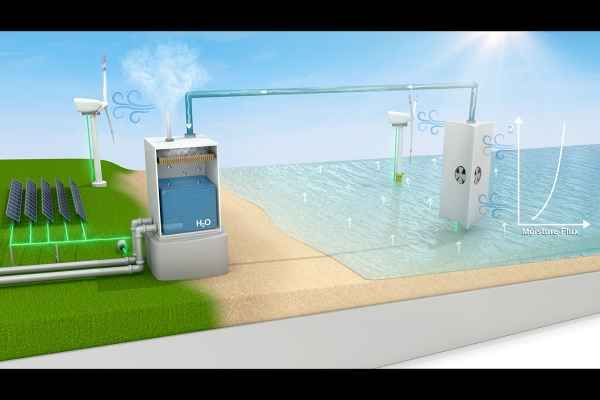An almost limitless supply of fresh water exists in the form of water vapor above Earth’s oceans, yet remains untapped, researchers said. A new study from the University of Illinois Urbana-Champaign is the first to suggest an investment in new infrastructure capable of harvesting oceanic water vapor as a solution to limited supplies of fresh water in various locations around the world.
The study, led by civil and environmental engineering professor and Prairie Research Institute executive director Praveen Kumar, evaluated 14 water-stressed locations across the globe for the feasibility of a hypothetical structure capable of capturing water vapor from above the ocean and condensing it into fresh water – and do so in a manner that will remain feasible in the face of continued climate change.
Kumar, graduate student Afeefa Rahman and atmospheric sciences professor Francina Dominguez published their findings in the journal Nature Scientific Reports.
“Water scarcity is a global problem and hits close to home here in the U.S. regarding the sinking water levels in the Colorado River basin, which affects the whole Western U.S.,” Kumar said. “However, in subtropical regions, like the Western U.S., nearby oceans are continuously evaporating water because there is enough solar radiation due to the very little cloud coverage throughout the year.”
Read more at University of Illinois at Urbana-Champaign, News Bureau
Image: “Eventually, we will need to find a way to increase the supply of fresh water as conservation and recycled water from existing sources, albeit essential, will not be sufficient to meet human needs. We think our newly proposed method can do that at large scales,” said Illinois professor Praveen Kumar. The illustration shows Kumar and his co-authors’ proposed approach for capturing moisture above ocean surfaces and transporting it to land for condensation.(Graphic courtesy Praveen Kumar and Nature Scientific Reports)


